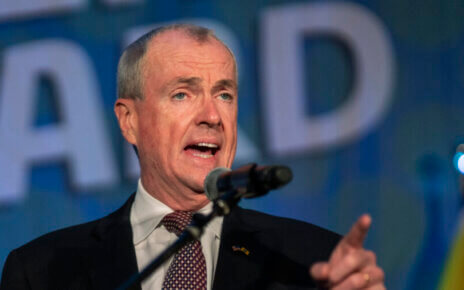Melissa Ziobro, Specialist Professor of Public History at Monmouth University, interviewed Kenneth Womack, Ph.D., as part of the Monmouth County Historical Association exhibit “Monmouth County, 9/11, and Its Aftermath.” Womack authored the books “World Trade Center Through Time” and “The Restaurant at the End of the World.”
In September 2001, Womack was in his fourth year as a tenure track professor at Penn State University, at the Altoona college. He was in his office when a colleague knocked on the door, informing him that a plane struck the World Trade Center. A group gathered in the breakroom.
Womack marched down the hall into an administrative building on campus called the E. Raymond Smith Building, where a TV was set up with the group huddled around it. The second plane hit before he walked in, the group suddenly realizing that this was no coincidence or accident.
His brother, living in Brooklyn at the time, was unable to be reached by phone. Local circuitry had gone haywire during those early days of cell phone use, but Womack’s brother was safe and watching TV.
A resurgence of nationalism occurred afterwards, pickup trucks with multiple flags tied to the back and the mirrors.
“Very quickly, there was this enormous outpouring of nationalism,” Womack said. “In some ways it’s good; it’s the building of community, but there were some dark sides of it too. It involves folks from other ethnicities who were sort of threatened by these fellows. There were some issues I had to deal with on our campus involving some of this, and of course, like the rest of the country, we were just in shock for a long time.”
Ziobro then mentioned to Womack the intense patriotism, as well as anti-Muslim and anti-immigrant backlash in the aftermath of the attacks.
Womack recalled a story of an African-American faculty member being cornered by a couple of trucks on a street corner. “That was a real wake-up call about the disjunctions that existed then, and still exist.
He then detailed to Ziobro his research processes behind “The Restaurant at the End of the World,” a book detailing the staff of “Windows on the World,” a restaurant that was perched on 107th floor of the World Trade Center.
“I just wanted to learn more about the folks who were there,” Womack said. “I fired up Google and started looking into it, and what I discovered there was almost nothing about [the restaurant staff].”
Womack used some stories from the New York Times’ Portraits of Grief Series, but the stories were typically of those in management. He made a spreadsheet of names for the nearly 137 employees within the restaurant on September 11.
“I wanted to account for them,” Womack said. “What was their job, were they a server, a cook, a sous chef, [or] a pastry chef. I eventually was able to account for everybody who was there on the floor and to create this apparatus. As I learned their stories, I created this kind of snapshot of their lives.”
Womack did not want to invent some narrative that involves characters who lost their lives, engaging in something as trivial as a fiction work, he said. Instead, he was interested in their imaginations.
“I was able to bring in anecdotes that I’ve actually heard from several of the folks who’s lost relatives are written about,” Womack said. “They were pleased. They were happy to have their relative remembered in some way because many of them were undocumented. What earnings they were making, they were sending them back to whatever nation that was and suddenly they had a little monument. I’m really proud of that.”
His book, “World Trade Center Through Time,” was then brought up by Ziobro. She asked about his inspirations and motivations behind the novel.
During his first several months at Monmouth, Womack jumped on the ferry to lower Manhattan to try to understand the trade center’s local geography.
“It’s a wonderful public works project,” Womack said. “It was one that was rife with controversy. Radio Row and that whole world that had existed for so long in lower Manhattan was under assault. I think this was advanced by Rockefeller and, of course, lots of money was behind it.”
All of these units coming together was able to successfully revitalize lower Manhattan, making it a place where people live and work, Womack explained. “There’s a work-life kind of existence that wasn’t there in quite the same way at all when it was really just this ragtag massive community of stores.”
Womack’s book details protests and strikes surrounding the site’s revitalization. A lot of politicians were “burned in effigy” as they attempted to construct a World Trade Center and all of the revitalization efforts that were associated with it. “It went from a controversy involving civic issues and it turned pretty quickly into an engineering challenge.”



